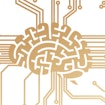
Gordon Fishell and Jordane Dimidschstein will combine human genetic data with large-scale transcriptomic and epigenetic analyses to assess how alterations in autism risk genes affect biological processes occurring within GABAergic and cholinergic neuronal populations during the early stages of fate specification.


